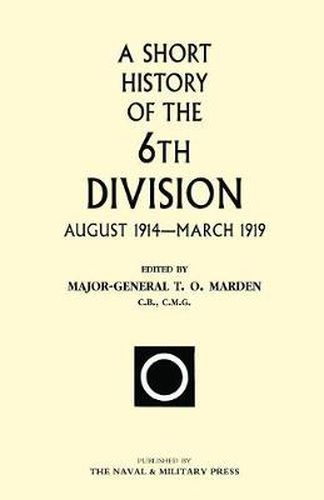Readings Newsletter
Become a Readings Member to make your shopping experience even easier.
Sign in or sign up for free!
You’re not far away from qualifying for FREE standard shipping within Australia
You’ve qualified for FREE standard shipping within Australia
The cart is loading…






This title is printed to order. This book may have been self-published. If so, we cannot guarantee the quality of the content. In the main most books will have gone through the editing process however some may not. We therefore suggest that you be aware of this before ordering this book. If in doubt check either the author or publisher’s details as we are unable to accept any returns unless they are faulty. Please contact us if you have any questions.
The 6th Division was a pre-war regular division which, in 1914, was divided between Ireland and England with HQ and one brigade in Cork, another brigade in Fermoy and the third brigade in Lichfield. The division was not in the original BEF but arrived in France in time to take part in the battle of the Aisne in September 1914. At the end of the war it was selected for the march into Germany and occupied a sector between Cologne and Bonn. In March 1919 it ceased to exist as 6th Division when it was redesignated ‘Midland Division’. Total casualties amounted to 53,740, four VCs were awarded.
The history is indeed a short one, intended as a record for those who served in it, as the editor (the fourth and last GOC of the division) points out in his preface. It is based mainly on War Diaries but lacks maps and illustrations. The actual narrative covers 80 pages with the remainder given over to very useful appendices. Battle casualties are tabulated year by year and by sector and dates within each year. There is a seventeen-page diary of events, movements and actions; VC citations are given and the divisional order of battle information is most comprehensive. It lists staffs and commanders as down to artillery battery and engineer field company level as they were on mobilization, and again on 11th November. A separate appendix lists changes in commanders and staff, with dates.
$9.00 standard shipping within Australia
FREE standard shipping within Australia for orders over $100.00
Express & International shipping calculated at checkout
This title is printed to order. This book may have been self-published. If so, we cannot guarantee the quality of the content. In the main most books will have gone through the editing process however some may not. We therefore suggest that you be aware of this before ordering this book. If in doubt check either the author or publisher’s details as we are unable to accept any returns unless they are faulty. Please contact us if you have any questions.
The 6th Division was a pre-war regular division which, in 1914, was divided between Ireland and England with HQ and one brigade in Cork, another brigade in Fermoy and the third brigade in Lichfield. The division was not in the original BEF but arrived in France in time to take part in the battle of the Aisne in September 1914. At the end of the war it was selected for the march into Germany and occupied a sector between Cologne and Bonn. In March 1919 it ceased to exist as 6th Division when it was redesignated ‘Midland Division’. Total casualties amounted to 53,740, four VCs were awarded.
The history is indeed a short one, intended as a record for those who served in it, as the editor (the fourth and last GOC of the division) points out in his preface. It is based mainly on War Diaries but lacks maps and illustrations. The actual narrative covers 80 pages with the remainder given over to very useful appendices. Battle casualties are tabulated year by year and by sector and dates within each year. There is a seventeen-page diary of events, movements and actions; VC citations are given and the divisional order of battle information is most comprehensive. It lists staffs and commanders as down to artillery battery and engineer field company level as they were on mobilization, and again on 11th November. A separate appendix lists changes in commanders and staff, with dates.